
Native American Literature Anthology 2.0
Sara Downs
Peter Blue Cloud
Peter Blue Cloud was raised on the Mohawk Reservation in Quebec, Canada as a part of the Turtle Clan. Though he grew up speaking Mohawk as a child, his grandfather introduced him to English as a teenager and then started writing songs and poems.
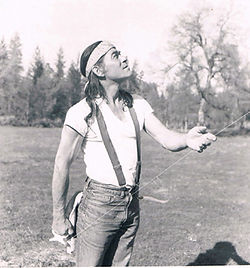
1
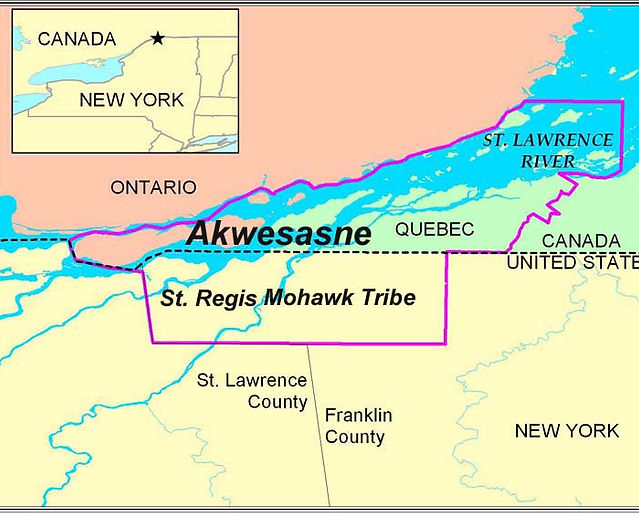
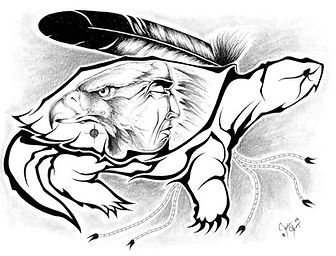
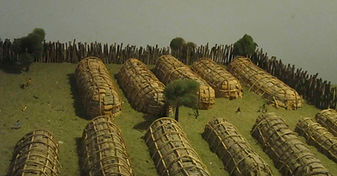
Hawk Nailed to a Barn Door
Hawk nailed to a barn door,
and rain makes you small and dark, and my muddy boots
are ankle-deep in ground fog,
far away dog barks sharp a crackling rifles
disked earth the hayfield's rimal mud
your brother and sister rough-legged hawks
of quick-beating wings and spread, down-pointed tails
momentarily transfixed in air as if fighting
an up-slanting gale from earth.
Hobbling with practiced dignity, Chauncy, my new dog neighbor
with cats on front legs, limp forward
to good-morning me the day, hesitant.
Yes, I am trying to fashion a scene to forget the maggots
and the stink, your hollow eaten eyes and tight closed
talons in last grasping, nailed through win muscles,
head down to side, crucified,
curved beak slightly open to my own questions
who has lost another particle of faith.
Your wings and claws dry now above the stove,
and the rising heat gently revolves them.
It is 4:30 a.m. and cold and dark and your feathers
will be passed on to sky lovers.
I was choking slightly, deep down, as I removed
your wings, claws, and tail feathers, then one by one
I took a handful of breast down,
so warm looking.
Buried you behind the barn with two pepperwood leaves
and a mumble se-sa-ton, o-nen,
go-home, now
Sat down in anger for your senseless murder,
all set to write a bitter song,
it is 5:00 a.m. now
and your feathers so close send me no messages of hate.
I look at your beautiful wings
and sense your flight.
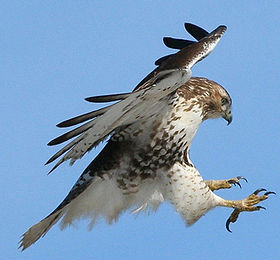
In this poem, Peter Blue Cloud illustrates the personal connection Native Americans have with animals and nature. This does exploit the "Eco-Indian" stereotype, however. The first several lines of the poem are setting up a scene for the reader. It's early morning and the sun as yet to kiss the earth. It's a little foggy and the earth is still damp from a recent rain. The narrator tries to focus his attention on anything but the site of the dead hawk. The description of the hawk is vivid. Maggots have eaten it's eyes out and the body has already started to decay, sending off a foul smell. It's talons are clasped shut and the head is bowed down and to the side. It's a pose that can be compared to the way Christ was on the cross. Each wing has a nail through it, just as Christ had a nail through each hand. The narrator takes the hawk down from its post and has to choke back tears and most likely the urge to vomit. He eventually burries it behind the barn and gives it a proper send off with a native prayer. The narrator is furioius over it's senseless murder. There was no need to kill the hawk except for sport. It should still be out roaming the sky with his flock. The narrator can sense the flight through looking at the wings. He knows that by giving the hawk a proper send off, it can at least fly in the after life. In a way, the narrator wants to be the hawk. He wants to be free from the oppression that comes from earth. He wants to be free to be who he is.
Throughout this poem there are references to Christ and Christianity. This is further example of the impact missionaries had during the early stages of Indian take-over. Instead of being free to practice their religion, the white man forced the natives to convert to Christianity. Any kind would do. This poem cannot shy away from the influence of religion. The narrator may be acting like a typical "Eco-Indian" but, the references to Christianity are unmatched. The way he describes the hawk nailed against the door is exactly like what Christ looks like on a crucifix. Not to mention the hawk is nailed to the door. It wasn't simply killed and left on the ground; it was killed then nailed for all the world to see. Christ was nailed to the cross and displayed for all of Jerusalem to see. His agony and suffering was showcased, just as the hawks was. Both were senseless killings by ignorance.
This poem also hints at the white man's disrespect towards the earth and all the creatures. The narrator comments on the senseless killing. He is furious that someone would have such disrespect for such an incredible animal. This could be used throughout the history of the white man vs. the Indian. Though it is a somewhat cheesey comparison, this disregard for the land is illustrated in Disney's Pocahontas. There's no need to get into a debate of fiction vs. history, the point is that the movie illustrated the Indian's appreciation for the land (cue "Colors of the Wind") and the settlers need to destroy it. This is an ongoing theme in several Native American literary works, but especially in this poem by Peter Blue Cloud.
I liked this poem because it really depicted the difference in the way people treat the land. It is a broad generalization, I admit, but it also has some truth behind it. Time and time again we see this theme occur in literary works, so it can't all be made up. I think Peter Blue Cloud really exploited that issue well in this poem. I also think that this could definitely be used as a religious poem as well. There is so much juxtaposition between this poem and the crucifiction of Christ. If someone tried hard enough, this could definitely be turned into a retelling of Christ's death by way of Native American story telling.